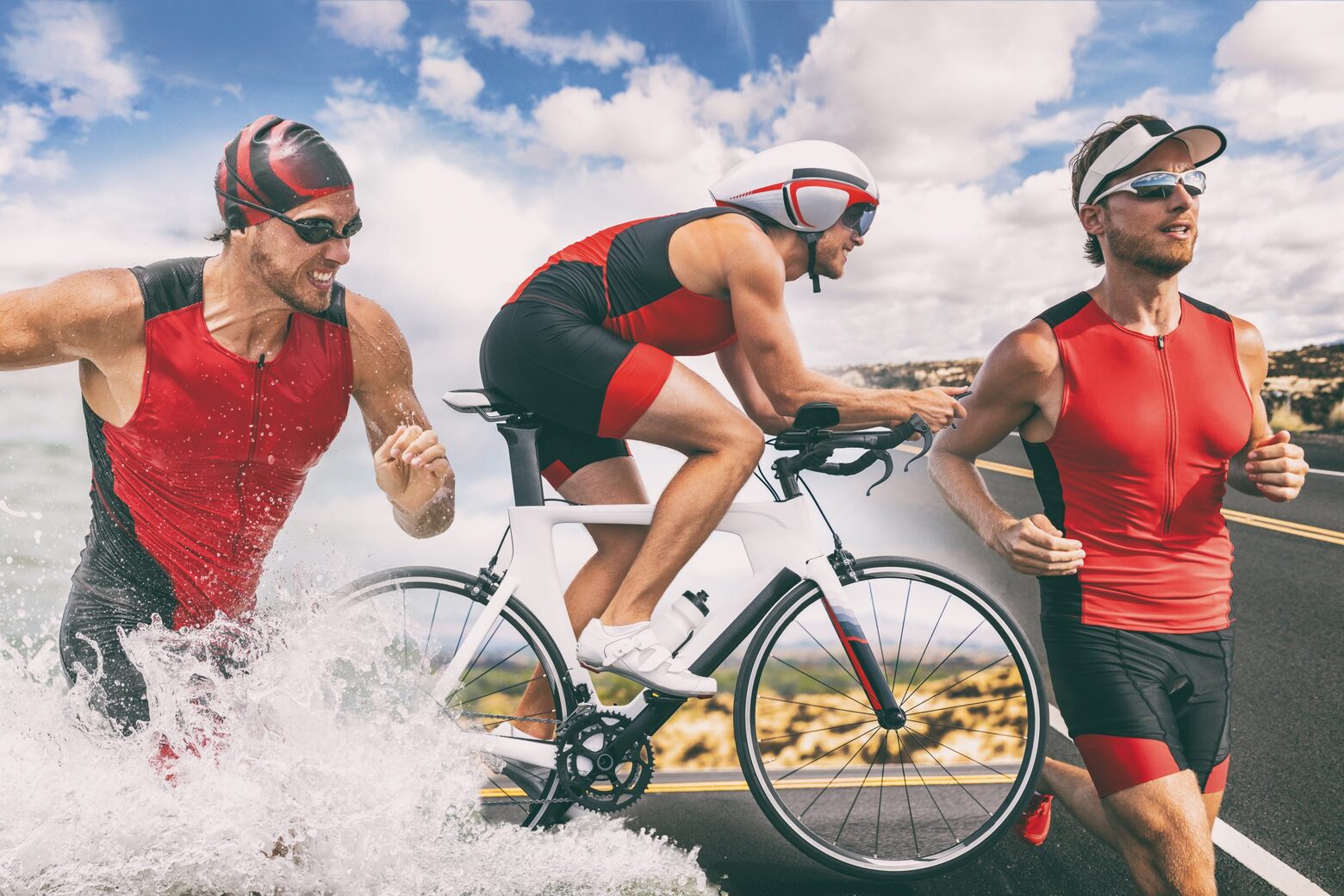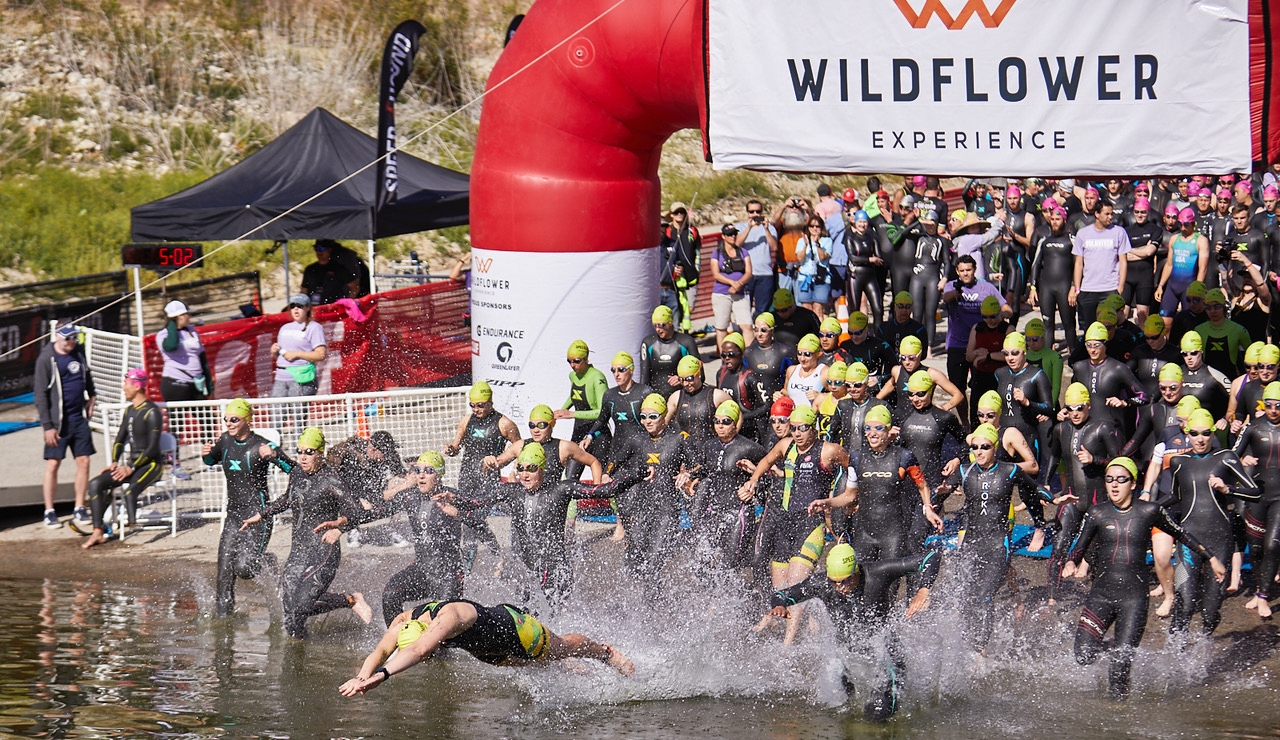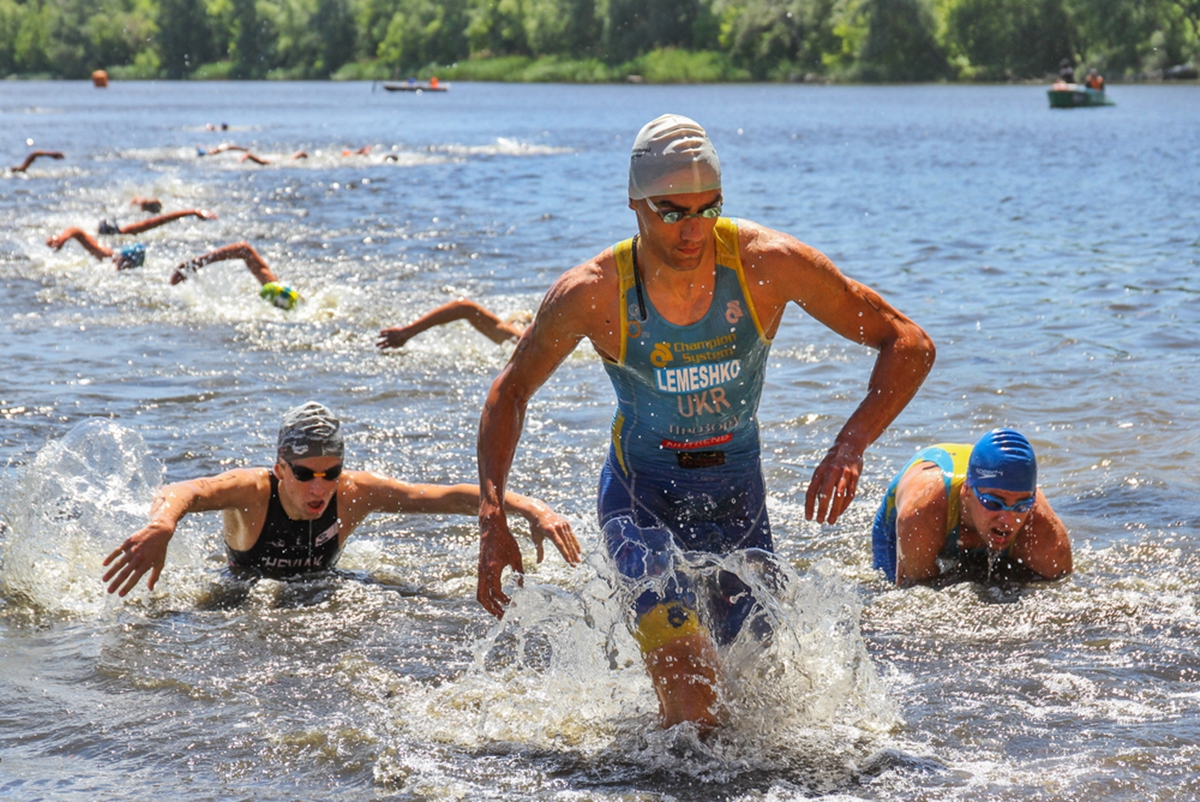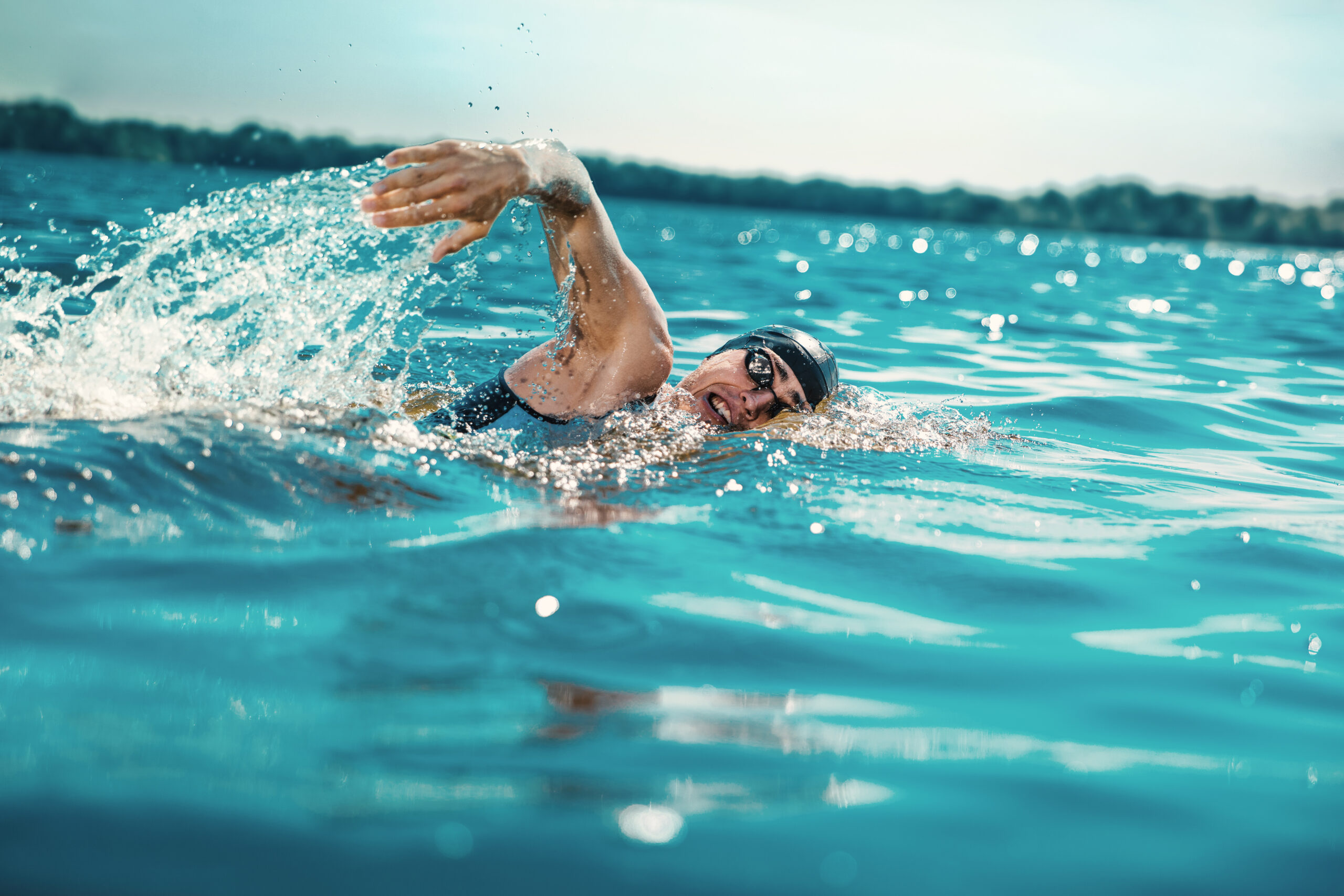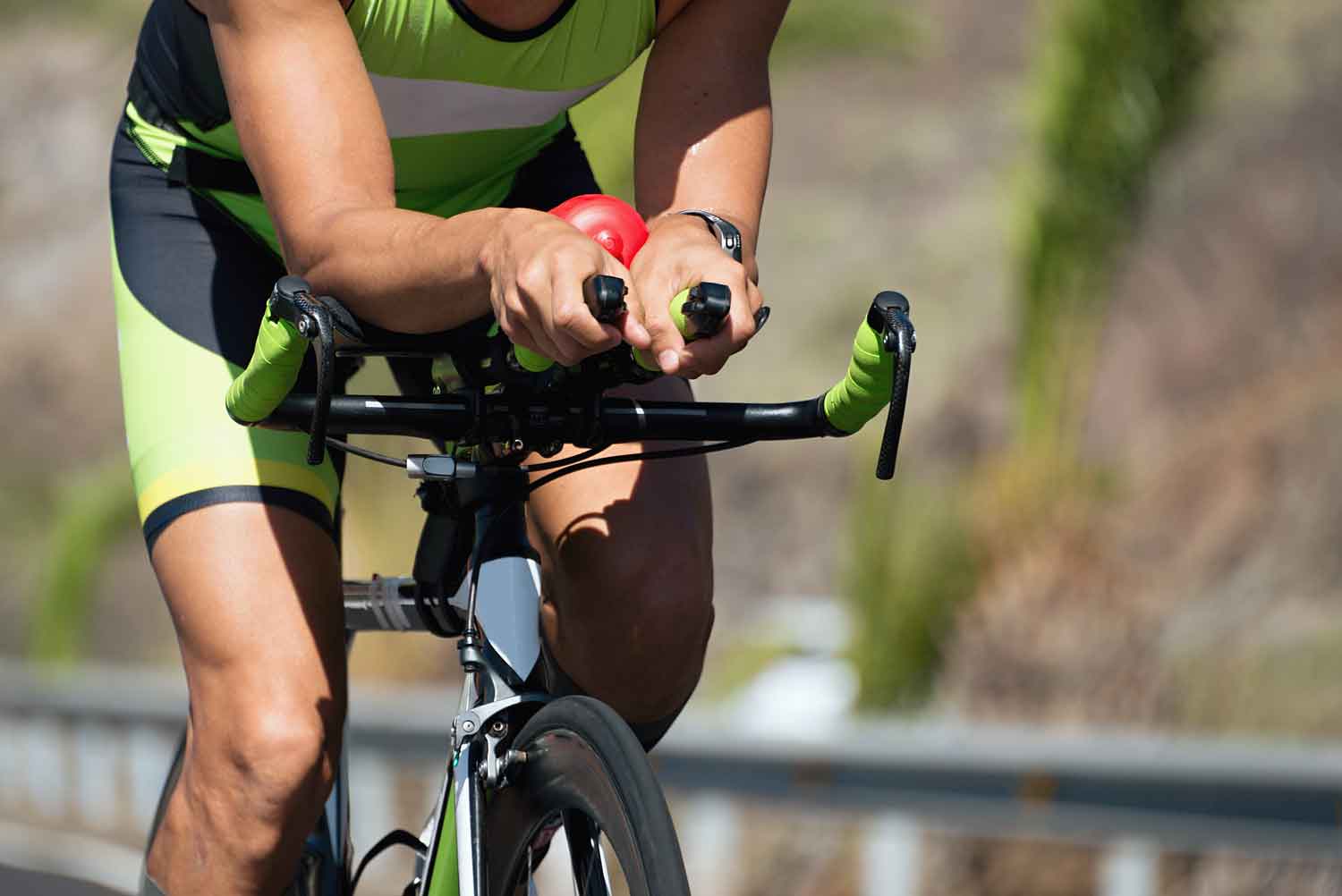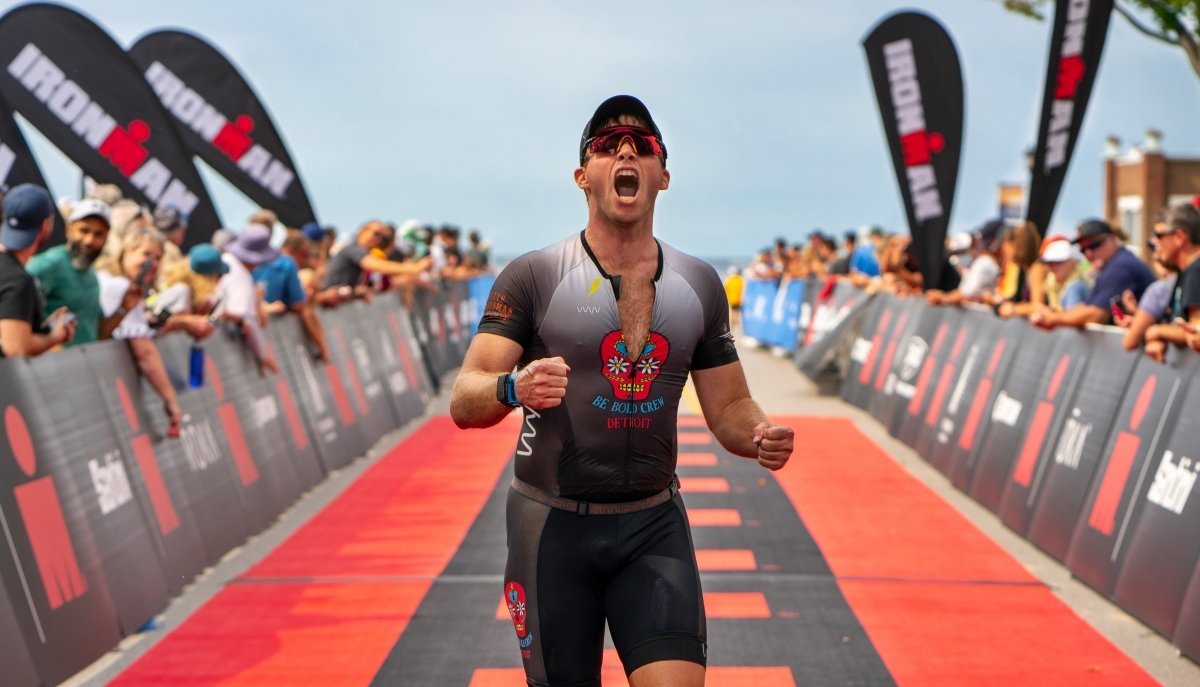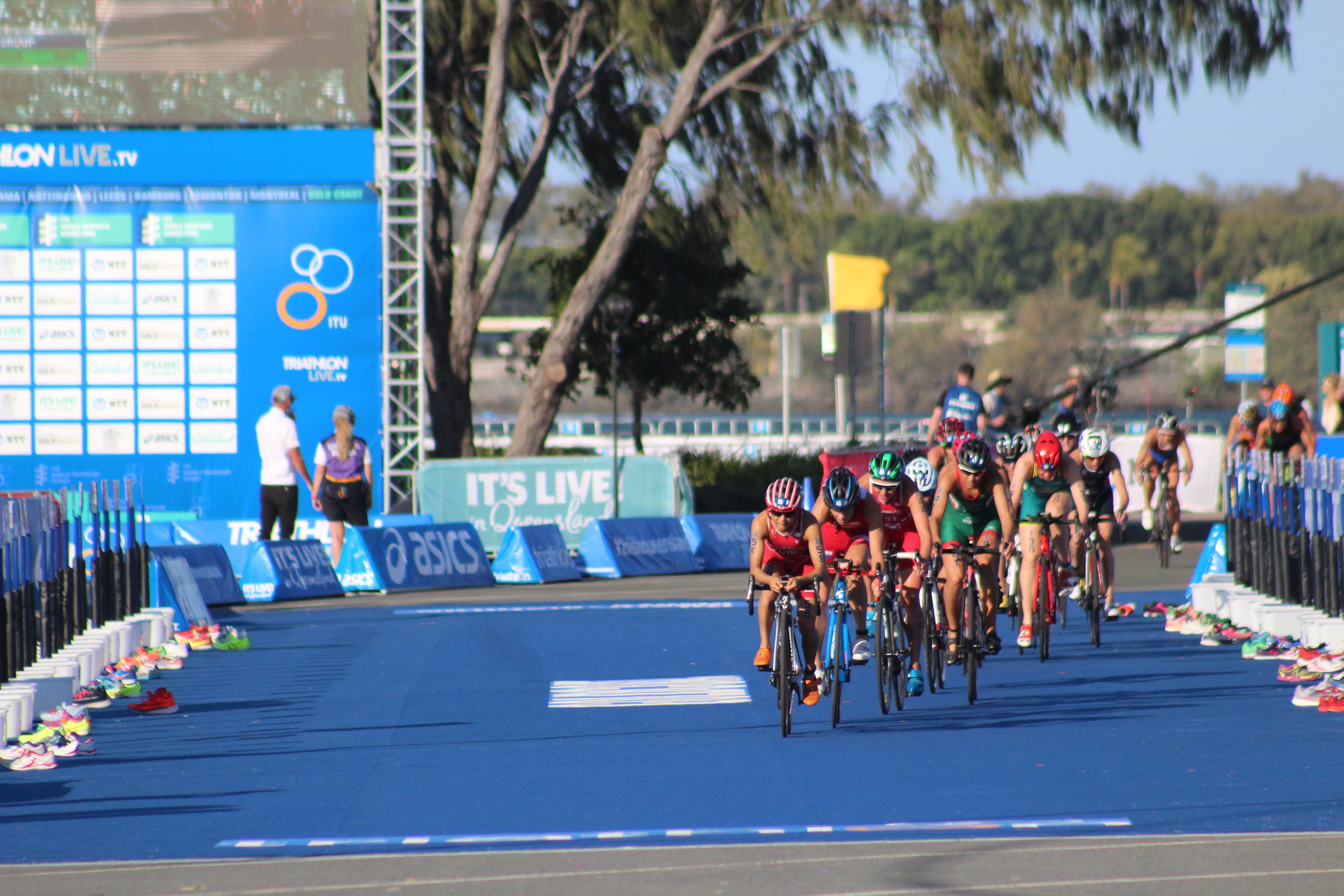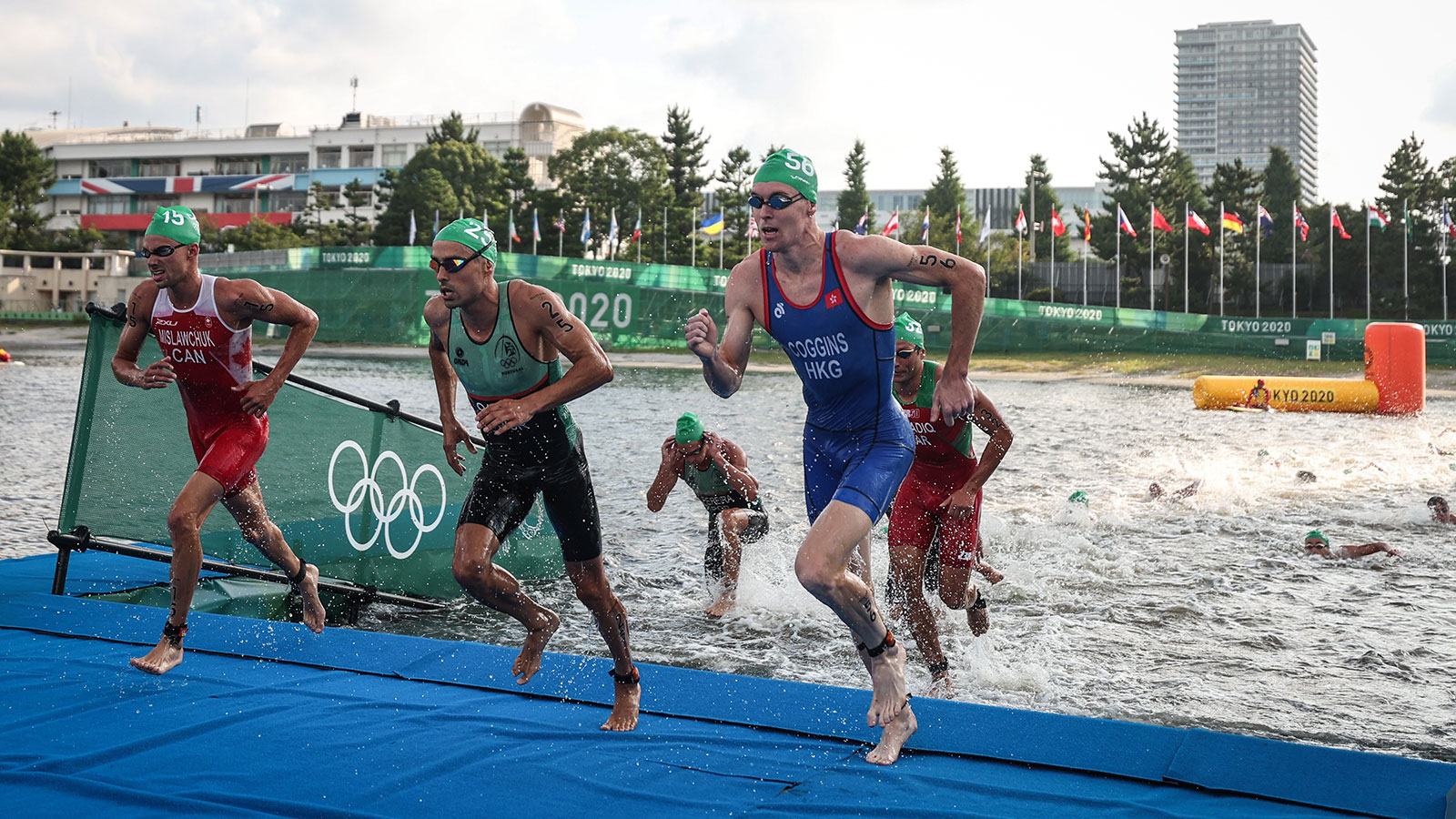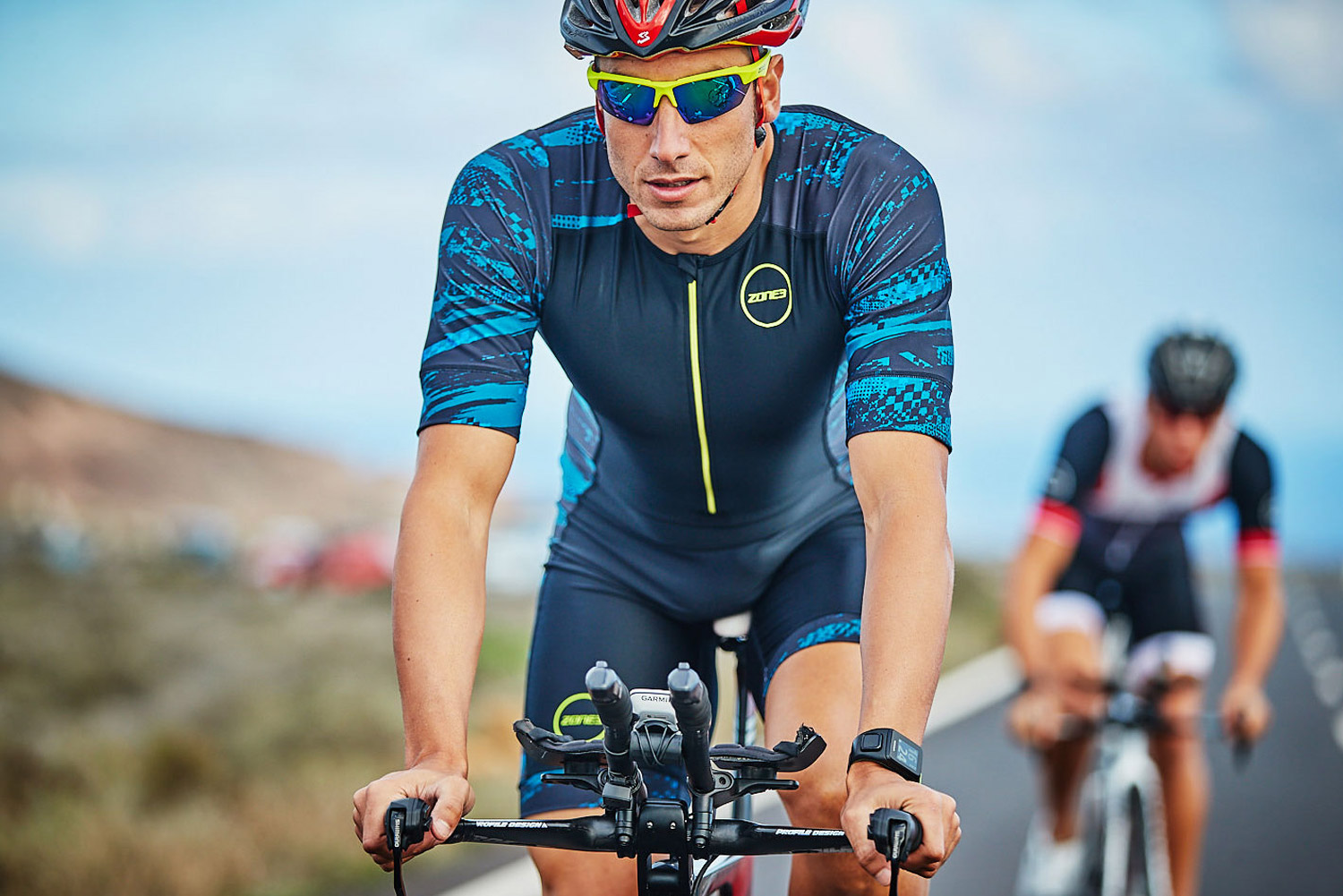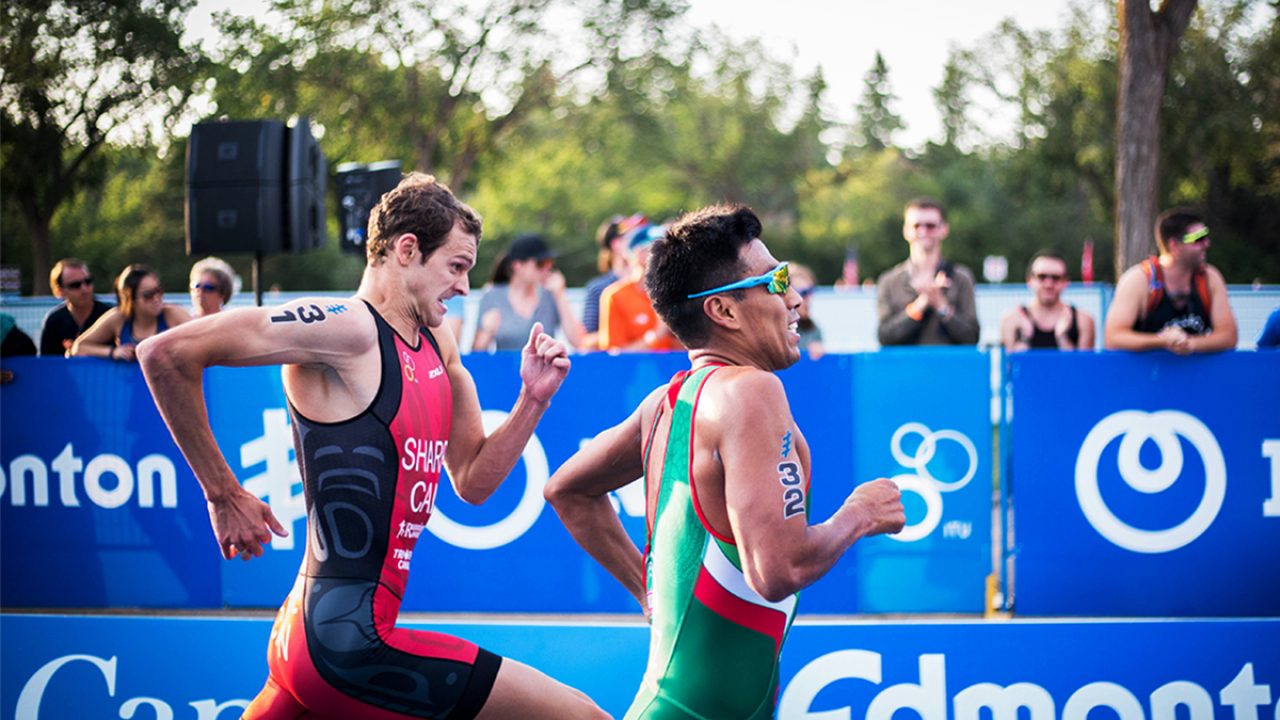Home>Misc>Featured>How To Swim In The Open Water In A Triathlon
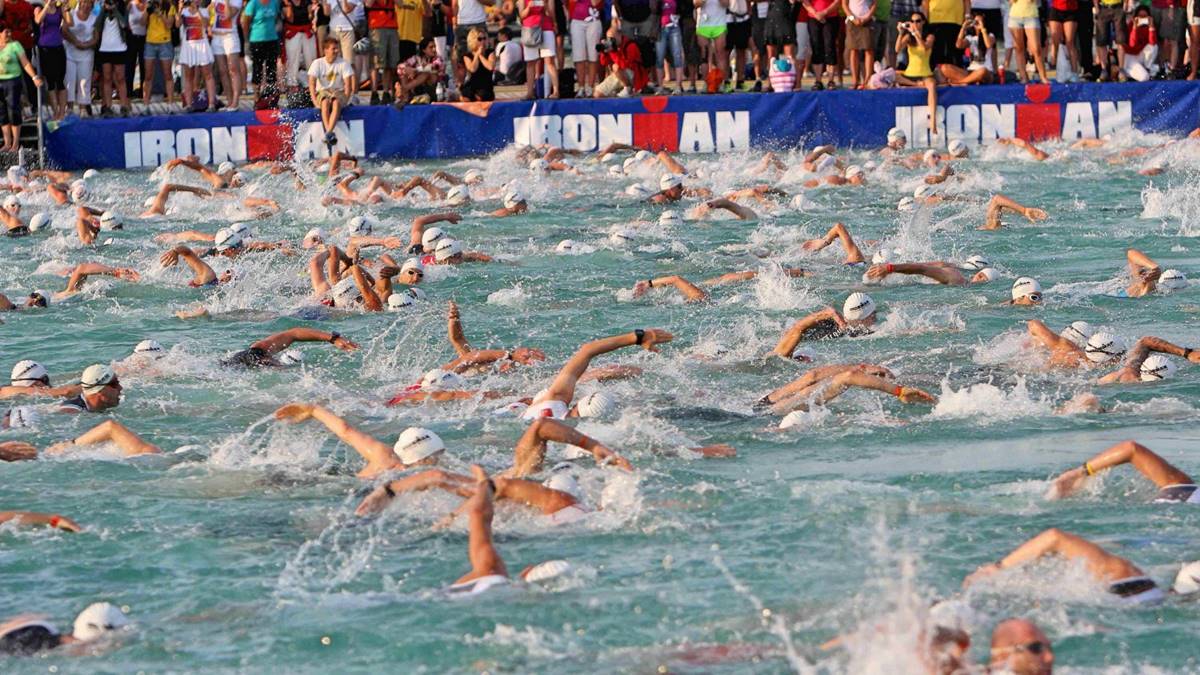

Featured
How To Swim In The Open Water In A Triathlon
Modified: October 3, 2023
Learn how to swim in the open water for your next triathlon with featured tips and techniques. Conquer the challenges of open water swimming and improve your performance!
Introduction
Triathlon, a multisport event consisting of swimming, cycling, and running, is a challenging and exhilarating endeavor that tests an athlete’s physical endurance, mental fortitude, and strategic skills. While each discipline presents its own unique set of challenges, the open water swim often stands out as one of the most demanding aspects of the race.
Unlike swimming in a pool, where the environment is controlled and predictable, the open water introduces a whole new set of variables. From unpredictable currents and wave conditions to limited visibility and unfamiliar surroundings, the open water swim requires athletes to adapt and navigate through unknown territories.
In this article, we will delve into the intricacies of the open water swim in a triathlon, exploring the importance of this leg, preparing for it effectively, and mastering the specific techniques necessary to conquer the challenges it presents.
A successful open water swim can set the tone for the rest of the race, providing athletes with a strong start and a confidence boost. Conversely, a struggle in the open water can have a significant impact on an athlete’s overall performance, leaving them mentally and physically drained as they transition into the next legs of the event.
Understanding the nuances of the open water swim and preparing for it meticulously can make all the difference in achieving a personal best and reaching the coveted finish line with a sense of accomplishment.
Whether you are a seasoned triathlete looking to improve your open water swim skills or a beginner, eager to tackle this challenging leg for the first time, this article will provide you with valuable insights, tips, and techniques to help you navigate the open waters with confidence and finesse.
Importance of Open Water Swim in Triathlon
The open water swim leg is a crucial component of any triathlon, playing a significant role in an athlete’s overall performance and success in the race. It not only tests the swimmer’s physical capabilities but also challenges their mental resilience and strategic decision-making abilities.
One of the key reasons why the open water swim holds such importance is that it closely mimics the conditions athletes will face in an actual triathlon race. Unlike swimming in a controlled pool environment, the open water introduces unpredictable factors such as currents, waves, wind, and limited visibility. By training in these challenging conditions, triathletes prepare themselves to handle any obstacles they may encounter on race day.
Additionally, the open water swim requires athletes to navigate through a course without the aid of lane lines or markers on the pool floor. This necessitates the development of sighting skills, which involve lifting the head to look for buoys or landmarks, maintaining proper direction, and adjusting swimming technique as needed. Mastering these skills is essential for staying on course and avoiding unnecessary detours, ultimately saving valuable time and energy.
The open water swim also presents opportunities for strategic decision-making. Swimmers must assess factors such as currents, wind direction, and the most efficient route to take in order to conserve energy and maintain momentum. This involves analyzing the conditions on race day, understanding the course layout, and making calculated choices for optimal performance.
Beyond the technical aspects, the open water swim offers a unique sensory experience that cannot be replicated in a pool. The feel of the water, the splash of the waves, and the immersive nature of the open environment add to the exhilaration and sense of adventure that come with participating in a triathlon. For many athletes, the open water swim is a thrilling and transformative part of the race that adds an extra layer of excitement and challenge.
Lastly, success in the open water swim can have a significant impact on an athlete’s overall race performance. A strong swim sets a positive momentum for the rest of the event, boosting confidence and setting a solid foundation for the subsequent cycling and running legs. Conversely, struggling in the open water can lead to exhaustion, anxiety, and a diminished performance in the remaining stages of the race.
In summary, the open water swim is a critical aspect of a triathlon, both in terms of its technical demands and its impact on an athlete’s overall race performance. By recognizing its importance and dedicating time and effort to train for the specific challenges it presents, triathletes can enhance their chances of a successful and satisfying race experience.
Preparing for the Open Water Swim
Preparing for the open water swim in a triathlon is essential to ensure a smooth and successful race day experience. Here are some key steps to help you get ready for the open water challenge:
- Develop strong swimming skills: Before tackling the open water, it’s important to have a solid foundation in swimming. Work on improving your stroke technique, efficiency, and endurance in the pool. Consider working with a swim coach or joining a swim club to fine-tune your skills.
- Gradually transition to open water: Start by incorporating open water sessions into your training routine. Begin in a calm, controlled environment such as a lake or a designated open water swim area. Practice sighting, breathing, and adapting to the different conditions you will encounter on race day.
- Simulate race conditions: To prepare yourself mentally and physically, simulate race day scenarios during your open water training sessions. Set up buoys or markers to create a course that mimics the actual race course. Practice swimming alongside other athletes to get a feel for swimming in close proximity and navigating through a crowd.
- Invest in the right equipment: Ensure you have the appropriate gear for the open water swim. A wetsuit can provide buoyancy and insulation, helping you swim faster and stay warm in cold water. Goggles with clear lenses and a comfortable fit are essential for visibility and comfort. Take the time to find the equipment that works best for you.
- Practice sighting: Sighting is the act of lifting your head to look for buoys or landmarks to stay on course. It’s important to practice this skill as it can be challenging and energy-consuming if not done efficiently. Incorporate sighting drills into your training sessions, focusing on maintaining proper form and minimizing disruptions to your stroke rhythm.
- Improve your breathing technique: Breathing in the open water can be different from swimming in a pool due to the varying conditions. Practice bilateral breathing (breathing on both sides) to improve your oxygen intake and adaptability. Work on developing a relaxed and controlled breathing rhythm to conserve energy and maintain focus during the swim.
- Build confidence through open water competitions: Participating in open water swim events, such as local races or organized practice swims, can help familiarize yourself with the dynamics of swimming in a competitive open water environment. It provides a valuable opportunity to test your skills, gain confidence, and fine-tune your race strategy.
Remember, preparation is key. By dedicating time to improve your swimming technique, acclimating to open water conditions, and practicing specific skills required for the open water swim, you will set yourself up for a successful and enjoyable race day experience.
Understanding the Course
One of the crucial aspects of preparing for the open water swim in a triathlon is understanding the course layout. Familiarizing yourself with the course not only helps you plan your strategy but also enables you to adapt to the specific challenges it presents. Here are some key factors to consider when understanding the course:
- Review the race information: Obtain as much information as possible about the course from the race organizers. This may include the distance, number and positioning of buoys, entry and exit points, and any specific rules or guidelines. Study the maps and course descriptions provided to gain a comprehensive understanding of what to expect.
- Visit the race venue: Whenever possible, visit the race venue in advance to get a firsthand look at the course. Take note of the landmarks, buoy placements, and the overall layout of the swim area. This will help you visualize the course and mentally prepare for the specific challenges that await.
- Consider the current and water conditions: Research the typical current patterns and water conditions for the race location. Understanding the nature of the currents, waves, and potential obstacles will help you develop a strategy for navigating through them. Keep in mind that water conditions can vary from day to day, so be prepared to adapt your approach accordingly.
- Identify sighting targets: Take note of any visible landmarks or buoys that can serve as reference points for sighting. Sighting targets can include buildings, trees, or distinct features along the shoreline. Identifying these targets in advance will help you stay on course and maintain a straight swimming line.
- Analyze the swim start: Pay attention to the race start format. Is it a mass start, where all competitors begin together, or a wave start, with different groups starting at intervals? Understanding the start format will help you plan your positioning in the water and gauge the level of competition around you.
- Consider the swim exit: Take note of the location and terrain of the swim exit. Are there stairs, a sandy beach, or a steep bank? Knowing what to expect when you exit the water will help you prepare mentally and physically for the transition from the swim to the next leg of the race.
Understanding the course layout empowers you to make informed decisions during the race. It allows you to adapt your stroke pattern, adjust for currents, and make strategic choices to maintain the optimal swim line. By incorporating course-specific information into your training sessions, you can simulate race conditions and improve your overall performance on race day.
Safety Measures
Ensuring safety during the open water swim is of utmost importance in any triathlon. The unpredictable nature of the open water environment, coupled with the physical demands of the race, necessitates taking necessary precautions. Here are some key safety measures to consider:
- Attend the pre-race safety briefing: Prior to the race, familiarize yourself with the safety protocols and guidelines provided during the pre-race safety briefing. Pay attention to any specific instructions regarding buoyancy aids, wetsuit usage, emergency procedures, and course rules.
- Wear appropriate safety gear: Adhere to the event’s safety regulations and wear the necessary safety gear. This typically includes a brightly-colored swim cap provided by the race organizers. If allowed, consider wearing a whistle attached to your wetsuit for easy access in case of an emergency.
- Train in open water conditions: Regularly practice swimming in open water to acclimate yourself to the conditions you will encounter on race day. This allows you to adapt your stroke technique, build confidence, and become more comfortable with the challenges specific to open water swimming.
- Swim with a buddy: Whenever possible, swim with a training partner or a group. Swimming with others provides an added layer of safety, as you can look out for each other during the swim. It is recommended to never swim alone in open water, especially in unfamiliar or challenging conditions.
- Utilize the buddy system: If the race allows, consider utilizing the buddy system during the swim. Find a fellow participant with a similar swimming pace and coordinate to stay close together during the race. This can provide reassurance and support in case assistance is needed.
- Follow the designated swim course: Stay within the designated swim course and avoid cutting across or swimming in unauthorized areas. Straying too far from the course can lead to safety hazards and potential disqualification. Pay attention to the positioning of buoys and swim in a straight line from one buoy to the next.
- Practice water safety skills: Familiarize yourself with basic water safety skills such as treading water, floating on your back, and efficient ways to conserve energy in case of fatigue or cramping. These skills can be invaluable in maintaining your safety and composure in emergency situations.
- Listen to your body: Pay attention to your body’s signals during the swim and be aware of any signs of fatigue, discomfort, or distress. If you experience any issues, such as dizziness, shortness of breath, or muscle cramps, slow down, signal for help, and seek assistance from the race officials or lifeguards present.
- Respect the water conditions: Assess the water conditions during the swim and use your best judgment. If the conditions are too extreme or pose a safety risk, it is crucial to prioritize your well-being and the well-being of other participants. Always follow the instructions and advice provided by the race officials and safety personnel.
Prioritizing safety during the open water swim is essential for a successful and enjoyable race experience. By adhering to safety guidelines, being prepared, and remaining vigilant, you can minimize risks and focus on giving your best performance on race day.
Acclimating to Open Water Conditions
Acclimating to open water conditions is a vital part of preparing for the open water swim in a triathlon. The unfamiliar environment of the open water, with its varying currents, waves, and limited visibility, requires swimmers to adapt their technique and mindset. Here are some strategies to help you acclimate to open water conditions:
- Start in calm waters: Begin your open water training in calm and controlled environments such as lakes or designated swim areas. This allows you to gradually adjust to the sensation of swimming in open water without the added challenges of strong currents or high waves.
- Progress to more challenging conditions: As you gain confidence and experience in the open water, gradually expose yourself to more challenging conditions. This can include swimming in areas with mildly choppy water or practicing in locations with varying currents. Pushing your limits in a controlled manner prepares you for the unpredictable nature of race day.
- Practice swimming in different weather conditions: Open water races can take place in various weather conditions, including rain, wind, or even extreme heat. Embrace opportunities to train in different weather conditions to adapt your technique accordingly and become comfortable swimming in varying elements.
- Simulate race scenarios: During open water training sessions, simulate race scenarios to replicate the race day experience as closely as possible. This includes starting from a beach or in-water start, navigating buoys, and swimming alongside others. By practicing these scenarios, you can develop mental resilience and adaptability.
- Train for limited visibility: In open water swims, visibility can be limited, especially in murky or dark conditions. Practice swimming with reduced visibility by wearing goggles with tinted lenses or swimming in areas with low visibility. This helps train your instincts and adapt your technique to stay on course and maintain a steady swim rhythm.
- Develop confidence in open water skills: Regularly practicing open water skills such as sighting, drafting, and dealing with unexpected conditions builds confidence. Focus on honing these skills during training sessions, gradually increasing the complexity and challenges to simulate race scenarios.
- Become comfortable with bi-lateral breathing: Bi-lateral breathing, the ability to breathe on both sides, is crucial in the open water. It allows you to adapt to waves, maintain balance, and improve visibility by alternating the side you breathe on. Incorporate bi-lateral breathing drills into your training routine to become comfortable and proficient in this technique.
- Stay calm and relaxed: Open water swims can be intimidating, especially for those transitioning from pool swimming. Practice techniques to stay calm and relaxed, such as deep breathing, positive self-talk, and visualization. A calm and relaxed mindset helps you conserve energy and make better decisions during the swim.
- Seek out open water swim groups or coaches: Joining an open water swim group or working with a coach who specializes in open water training can provide valuable guidance and support. These groups often offer organized practice swims, technique sessions, and feedback to help enhance your open water skills.
Acclimating to open water conditions takes time and practice. By gradually exposing yourself to different environments, simulating race scenarios, and developing the necessary skills and confidence, you will be well-prepared to tackle the open water swim in your triathlon race.
Breathing Techniques
Mastering proper breathing techniques is crucial for a successful open water swim in a triathlon. The open water environment presents unique challenges that can impact your breathing rhythm and overall swim performance. Here are some key breathing techniques to consider:
- Bilateral Breathing: Bilateral breathing involves alternating your breathing pattern between both sides during the swim. This technique helps balance your stroke, maintain proper body alignment, and improve overall swim efficiency. Practicing bilateral breathing during training allows you to adapt to different conditions and increase your spatial awareness in the open water.
- Exhale Fully: Focus on exhaling fully underwater, releasing all the air from your lungs before rotating your head to take a breath. This ensures efficient oxygen exchange and allows you to take in a fresh breath when you turn to breathe. Exhalation during the underwater phase of your stroke helps maintain relaxation and improves overall breathing efficiency.
- Rhythmic Breathing: Establishing a consistent breathing rhythm is crucial for maintaining a steady swim pace. Find a breathing pattern that works for you, such as breathing every three or four strokes, and stick to it. A rhythmic breathing pattern helps create a sense of comfort and provides a reliable cadence during the swim.
- Sighting Breaths: Incorporate sighting breaths into your swim to help you navigate and stay on course. Instead of taking a full breath, quickly rotate your head to the forward-sighting position while taking a brief breath before returning your head to the neutral position. This allows you to maintain your swimming speed and direction without compromising your stroke and pace.
- Adapt to Wave Conditions: In choppy or wavy conditions, adjust your breathing technique to accommodate the waves. Time your breaths to coincide with the crest of a wave, allowing you to breathe more easily while minimizing the risk of swallowing water. Being flexible and adaptable with your breathing technique in different wave conditions is crucial for maintaining a smooth and efficient swim.
- Practice Open Water Breathing: Regularly practice breathing techniques in open water to simulate race conditions. Familiarize yourself with the sensations and challenges of breathing in an unfamiliar and often turbulent environment. Incorporate breathing drills into your open water training sessions to build confidence and adaptability.
- Controlled and Relaxed Breathing: Focus on maintaining a controlled and relaxed breathing pattern throughout the swim. Avoid shallow or rapid breaths, as they can lead to hyperventilation and anxiety. Foster a relaxed mindset and use your breath as a tool to maintain composure and conserve energy during the swim.
- Mental Focus: Use your breath as a focal point to stay present and focused during the swim. Pay attention to the rhythm of your breath, the sensation of the air entering and leaving your lungs, and the sound of your breath underwater. This mindfulness can help calm your mind, reduce anxiety, and enhance your overall swimming performance.
- Leverage Wetsuit Buoyancy: If wearing a wetsuit, take advantage of its buoyancy to assist with breathing. The upward buoyant force of the wetsuit allows for a more streamlined body position and easier breathing. Practice swimming in a wetsuit to familiarize yourself with the unique sensation and adapt your breathing technique accordingly.
By mastering these breathing techniques, practicing them in open water conditions, and maintaining a relaxed and controlled breathing pattern, you will be better equipped to tackle the challenges of the open water swim in your triathlon race.
Sighting and Navigation
Sighting and navigation skills are essential for maintaining the correct course and staying on track during the open water swim in a triathlon. Without the guidance of lane lines or markers on the pool floor, swimmers must rely on sighting and navigation techniques to navigate through the open water. Here are key strategies to improve your sighting and navigation skills:
- Lift and Look: The basic concept of sighting involves lifting your head to look forward and adjust your course accordingly. Lift your head just enough to clear the water and quickly scan for buoys or landmarks without disrupting your swimming rhythm. Choose a point on the horizon or a stationary object to aim for and maintain a straight direction.
- Timing and Frequency: Incorporate sighting into your swim rhythm at regular intervals. The frequency of your sighting will depend on the distance between buoys and the conditions of the water. Experiment during training sessions to find a sighting frequency that allows you to stay on course without compromising your swimming efficiency.
- Body Alignment: Maintain proper body alignment when sighting to minimize resistance and maximize efficiency. Keep your head aligned with your spine and body, rather than lifting it too high or dropping it too low. This allows for smooth and seamless sighting without negatively impacting your stroke.
- Use Peripheral Vision: Train your peripheral vision to be aware of other swimmers and course markers without fully turning your head. This allows you to stay on track while remaining aware of your surroundings, avoiding collisions, and adjusting your pace as necessary.
- Practice Swimming Straight: Developing the ability to swim in a straight line will reduce the need for frequent and excessive sighting. Focus on maintaining proper body alignment, engaging your core muscles, and using your stroke technique to swim efficiently in a straight course. This will help conserve energy and minimize the number of times you need to sight.
- Coordinate with Buoy Placement: Study the course map and understand the positioning of buoys along the swim route. Analyze how they are arranged and spaced, and plan your sighting technique accordingly. Adjust your sighting frequency and accuracy based on the distance between buoys and any turns or deviations in the course.
- Practice in Different Conditions: Train in open water conditions that replicate the challenges you may face on race day. Swim in locations with limited visibility, various wave conditions, and different water temperatures. By practicing in diverse environments, you can adapt your navigation techniques to different situations and be better prepared for race day.
- Utilize Natural Landmarks: Orient yourself using natural landmarks visible from the open water. This can include buildings, trees, rock formations, or distinctive features along the shoreline. Identifying and using these landmarks in conjunction with course markers can provide additional guidance and serve as visual cues for navigation.
- Visualize the Course: Prior to the race, visualize yourself swimming the course. Mentally rehearse the path, the buoy placements, and your sighting technique. By visualizing the course repeatedly, you can enhance your familiarity with the route and increase your confidence in accurately navigating the open water.
By incorporating these sighting and navigation techniques into your training, refining them in varying open water conditions, and practicing efficient sighting without disrupting your swim stroke, you can improve your ability to stay on course and successfully navigate the open water swim in your triathlon race.
Drafting Strategies
Drafting, the technique of swimming closely behind or beside another swimmer, can provide significant advantages during the open water swim in a triathlon. By strategically positioning themselves, swimmers can reduce drag, conserve energy, and potentially increase their swimming speed. Here are key drafting strategies to consider:
- Find a Competitor of Similar Ability: Look for a swimmer who is swimming at a similar pace or slightly faster than you. Drafting behind someone who is much faster may be difficult to maintain, while drafting behind a slower swimmer may not provide as much benefit.
- Position Yourself Correctly: Position yourself slightly to the side and behind the swimmer you are drafting off. This allows you to benefit from their wake and reduce the resistance caused by the water. Aim to swim in their slipstream and stay as close as possible without making contact or interfering with their stroke.
- Stay Alert and Communicate: Maintain spatial awareness and communicate with the swimmer you are drafting off to ensure a smooth and cooperative swim. Avoid sudden movements or accidental contact, as this can disrupt both your and their swim rhythm.
- Alternate Drafting Positions: If swimming in a group, take advantage of the rotating drafting positions. By taking turns at the front, you can distribute the effort evenly and keep the energy levels of the group consistent. Communicate with your group members to determine the most efficient rotation strategy.
- Synchronize Stroke Cadence: If possible, adjust your stroke cadence to match the swimmer you are drafting off. This facilitates smoother swimming and minimizes disruptions caused by varying stroke rates.
- Be Prepared for Surges: If the swimmer you are drafting off increases their pace, be prepared to match that surge or make a decision to drop back and find a new drafting position. It’s important to assess your own ability and racing strategy to determine the most effective approach in such situations.
- Use Drafting to Pass: Drafting can also be used strategically to pass a swimmer. If you feel confident and have the energy, you can use the momentum gained from drafting to make a well-timed surge and overtake the swimmer in front of you.
- Practice Drafting in Open Water: Incorporate drafting drills into your open water training sessions to condition your body and mind for this technique. As drafting requires close proximity and spatial awareness, practicing in a controlled environment can help you become more comfortable and proficient when executing drafting strategies on race day.
- Respect Competition Rules: Familiarize yourself with the competition rules regarding drafting to ensure you comply with the regulations set by the race organizers. While drafting is allowed in some races, there may be specific rules regarding drafting distance, overtaking, or penalties for improper drafting techniques.
By implementing these drafting strategies, practicing them during training sessions, and recognizing the dynamics of the drafting approach, you can effectively utilize this technique to enhance your performance and conserve energy during the open water swim in your triathlon race.
Exiting the Open Water and Transitioning
Exiting the open water and transitioning smoothly to the next leg of the triathlon is a critical part of a successful race. The way you approach the end of the swim can greatly impact your overall performance. Here are important considerations to effectively exit the water and transition:
- Maintain Focus: As you approach the end of the swim, maintain focus and stay alert. Keep your head up, survey the surrounding area, and assess the positioning of your competitors.
- Sight for the Exit: Lift your head periodically to sight the location of the swim exit. This will help you swim in the correct direction and mentally prepare for the transition from water to land.
- Adjust Stance: As the water becomes shallow, adjust your swimming technique to accommodate the changing depth. Lengthen your stroke and gradually increase your cadence to prepare for standing up.
- Choose the Right Moment: Select an appropriate moment to stand up, considering the water depth, terrain, and the swimmers around you. Aim to stand up smoothly and avoid any collisions or tangling with other participants.
- Remain Calm: Exiting the water can feel disorienting due to the change in environment and the rush of adrenaline. Stay calm and composed, focusing on maintaining a steady breathing rhythm and a relaxed mindset.
- Remove Swim Cap and Goggles: As you exit the water, start removing your swim cap and goggles, if needed. This will save time during the transition and allow you to have a clear field of vision as you move towards the transition area.
- Wetsuit Removal: If you are wearing a wetsuit, consider the best strategy for removing it swiftly. Keep in mind that wetsuits can be sticky when wet, so it may be helpful to use a lubricant beforehand or have designated helpers at the water’s edge to assist with wetsuit removal.
- Find Your Landmark: Identify a landmark or visual marker that will guide you to your specific transition area. This helps minimize confusion and ensures that you head in the right direction.
- Mental Preparation: Use the transition from water to land to mentally transition your focus from swimming to the next leg of the triathlon. Mentally rehearse your plan for the transition, visualizing the steps you need to take and mentally preparing for the upcoming segment of the race.
- Prep Your Gear: As you approach the transition area, mentally prepare yourself for the transition by visualizing the layout of your gear and knowing its exact location. This will help you find and access your equipment quickly and efficiently.
- Follow Transition Rules: Familiarize yourself with the transition rules set by the race organizers. Understand the designated transition zones, any specific requirements for gear placement, and rules regarding assistance from support staff or fellow competitors.
- Stay Organized: Keep your transition area tidy and organized, minimizing the risk of losing or misplacing essential equipment. Use a towel or mat to mark your space and ensure your gear is arranged in a logical order for easy accessibility.
- Practice Transitions: Incorporate transition practice into your training sessions to improve efficiency and familiarity. Simulate the transition process, including exiting the water, removing gear, and transitioning to the next leg, to fine-tune your movements and streamline your transition times.
By considering these tips for exiting the open water and transitioning smoothly, you can minimize time and effort spent in the transition area and confidently move on to the next leg of the triathlon with a clear focus and determined mindset.
